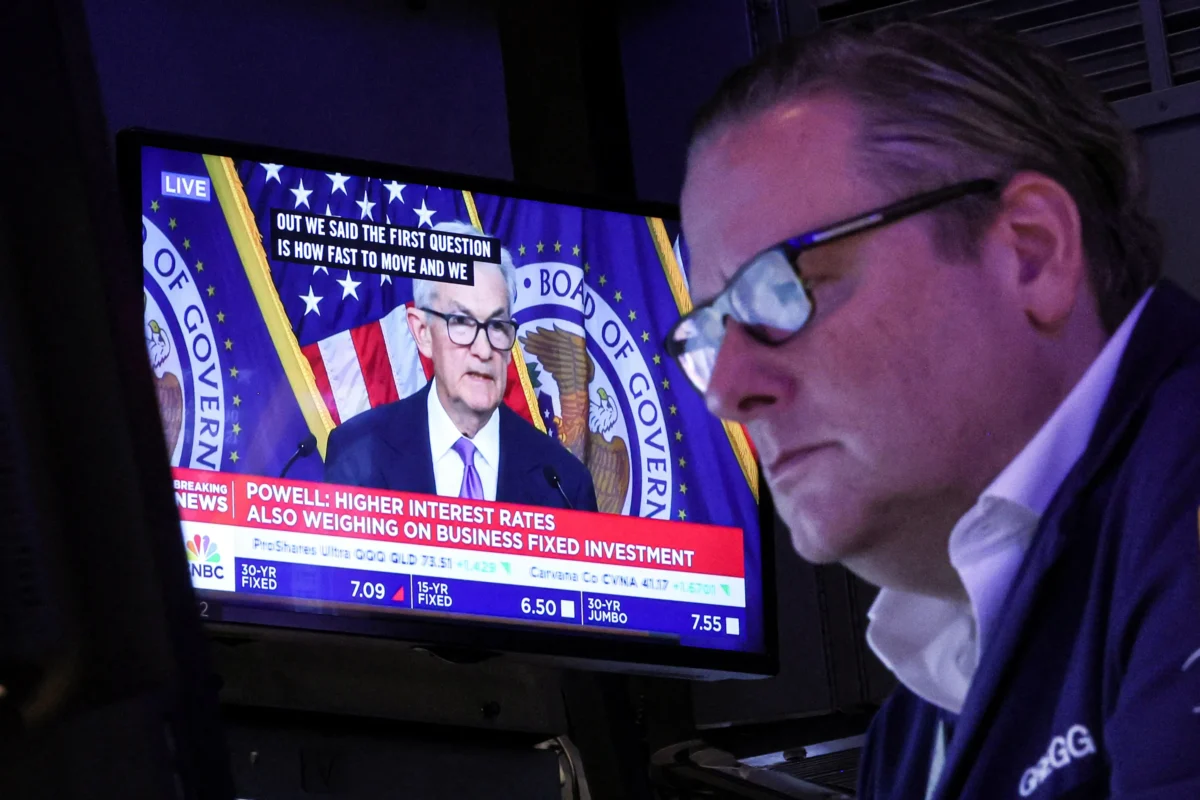The Jackson Hole Economic Symposium—an annual event of bankers, economists, and monetary policymakers—convenes this week for a three-day gathering from Aug. 22 to Aug. 24 in Jackson Hole, Wyoming. The monetary festivities could set the stage for the Fed loosening policy and laying the groundwork for a September interest rate cut.
The theme for this year’s episode, hosted by the Kansas City Fed, will be “Reassessing the Effectiveness and Transmission of Monetary Policy.”
Officials are anticipated to concentrate on unwinding the Fed’s restrictive monetary policy stance of the last two-plus years, with the institution shifting from inflation-data-dependent to labor-data-dependent.
On Aug. 23, when he is scheduled to deliver a 10 a.m. EST address, Powell is expected to strike a more dovish tone than in previous years and hint at a coming interest rate cut.
Additionally, Powell may reiterate his comments of the past few months: economic activity is robust, the central bank is gaining confidence that inflation is returning sustainably to the Fed’s 2 percent target, the labor market is coming back into better balance, and the economy is on track to achieve a soft landing.
For nearly 50 years, it has been a staple for the Federal Reserve, initially starting as a conference focused on agricultural trade.
The Jackson Hole retreat was not considered a critical affair until 1982 when then-Fed Chair Paul Volcker appeared and adjusted the event’s focus beyond agriculture. Several years later, when then-Fed Chair Alan Greenspan presented a speech on “Monetary Policy Issues in the 1990s,” alongside several of his central bank counterparts, the symposium was cemented as a landmark meeting for the Federal Reserve System.
Today, it is also a crucial occasion for the U.S. financial markets, attracting the attention of traders everywhere as officials engage in discussions that could have lasting economic implications.
Rate Cut Debate
It has been two years since Fed Chair Jerome Powell presented a hawkish stance and sounded the alarm that higher inflation-fighting interest rates would “bring some pain to households and businesses.”
“These are the unfortunate costs of reducing inflation. But a failure to restore price stability would mean far greater pain,” the U.S. central bank chief said at the annual Jackson Hole economic policy symposium in August 2022.
Since then, the annual inflation rate has eased from a peak of 9.1 percent to below 3 percent. The U.S. labor market has been solid, and economic growth has remained intact.
Now that inflation is cooling and the unemployment rate has edged up to its highest level in nearly three years, the Fed is poised to pivot on monetary policy and become the latest major central bank to announce a rate cut.
“We expect Chair Powell’s Jackson Hole speech will set the stage for a September rate cut, but decline to weigh in on the pace of subsequent cuts or the possibility of a larger 50bp move,” said Nomura Securities in a report.
Deutsche Bank economists echoed this viewpoint, writing in a note that Powell will not “pre-commit to any particular rate-cut trajectory but [will] signal that the Fed has gained sufficient confidence that it will soon be appropriate to begin easing policy.”
According to the CME FedWatch Tool, investors overwhelmingly expect a 25-basis-point reduction to the benchmark federal funds rate in September.

That said, it remains to be seen how fast and furious the Fed will be in lowering the policy rate from its 23-year high of between 5.25 percent and 5.5 percent.
The Fed’s updated Summary of Economic Projections (SEP)—a quarterly report that features officials’ projections for rates, GDP growth, the jobless rate, and inflation—will be published in September and could offer insight into where interest rates could be headed over the next 12 months.
In June, the SEP revealed that policymakers trimmed their rate cut forecasts for 2024 from three to one.
Even after the three-day market crash that transpired earlier this month, the financial markets will probably prefer a quarter-point cut, says Ipek Ozkardeskaya, a senior analyst at Swissquote Bank.
“Would the markets be upset with the idea of a 25bp cut instead of a 50bp? Probably not, because a 50bp cut would require a severe economic slowdown, a crisis, or a panic mode, which is not good for risk appetite,” she said in an emailed note. “Therefore, the best of both worlds would be the hint of a 25bp cut that would keep the market mood in the sweet soft-landing spot.”
What Fed Officials Are Saying
For now, officials might be squarely focused on the September policy meeting.
Speaking in a recent interview with The Wall Street Journal, Minneapolis Fed President Neel Kashkari said it would be appropriate to potentially lower interest rates next month because of softness in the labor market.
Atlanta Fed chief Raphael Bostic told the Financial Times that the central bank cannot “afford to be late to ease monetary policy.”
“I’m open to something happening in terms of us moving before the fourth quarter,” he said.
Fed Gov. Michelle Bowman said she is concerned that the United States still faces upside inflation risks.
“Increased measurement challenges and the frequency and extent of data revisions over the past few years make the task of assessing the current state of the economy and predicting how it will evolve even more challenging,” Bowman said in prepared remarks at an Alaska Bankers Association event on Aug. 20. “I will remain cautious in my approach to considering adjustments to the current stance of policy.”
The rate-setting Federal Open Market Committee (FOMC) will hold its next two-day policy meeting on Sept. 17 and 18.
From The Epoch Times

